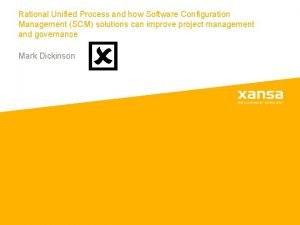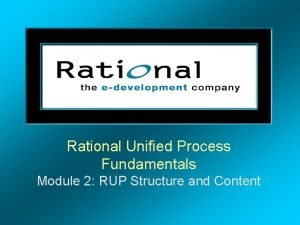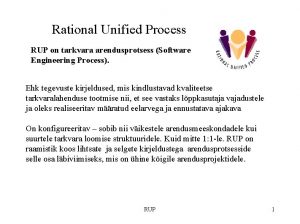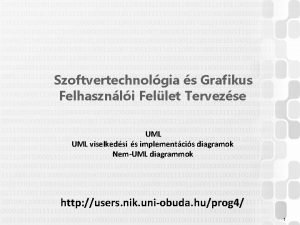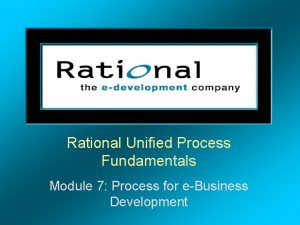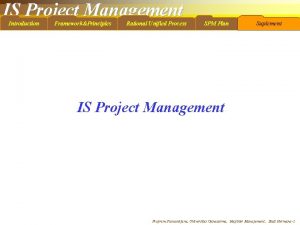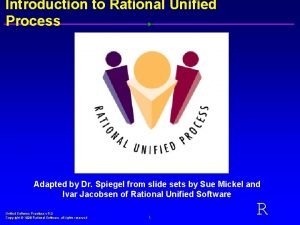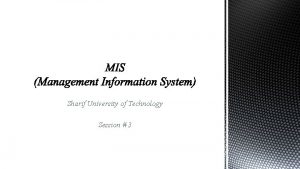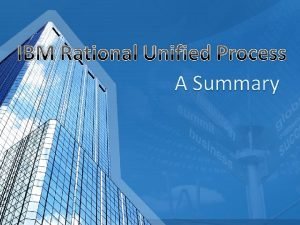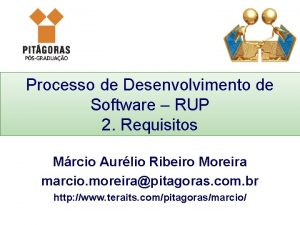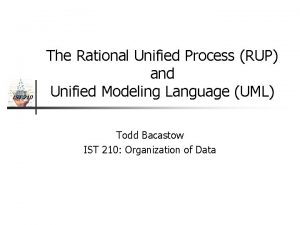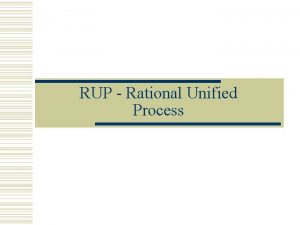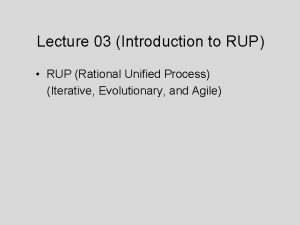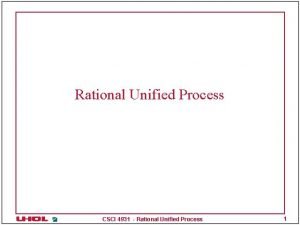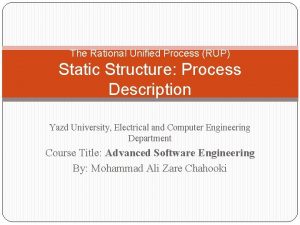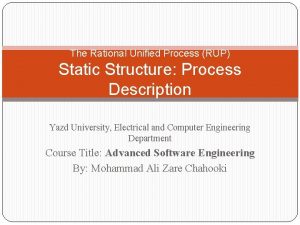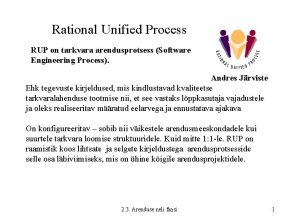The Rational Unified Process RUP An ArchitectureCentric Process

















- Slides: 17

The Rational Unified Process (RUP) An Architecture-Centric Process Yazd University, Electrical and Computer Engineering Department Course Title: Advanced Software Engineering By: Mohammad Ali Zare Chahooki

The Importance of Models § A large part of the RUP focuses on modeling. § Models help us understand both the: § problem and § solution. § The model is not the reality but best models are ones that stick very close to reality 2

Architecture Suppose the task: describing a system so that designers, programmers, users, and managers would be able to do the following: § Understand what the system does § Understand how the system works § Be able to work on one piece of the system § Extend the system § Reuse part of the system to build another one 3

Architecture Multiple Views For a building, different types of blueprints are used to represent different aspects of the architecture: § Floor plans § Elevations § Electrical cabling § Water pipes, central heating, and ventilation § The look of the building in its environment (in sketches) 4

The 4+1 View Model of Architecture 5

The 4+1 View Model of Architecture 1) The Logical View § It is an abstraction of the design model and identifies: § major design packages/subsystems, and § classes 6

The 4+1 View Model of Architecture 7

The 4+1 View Model of Architecture 2) The Implementation View § It addresses the issues of § ease of development, § management of software assets, § reuse 8

The 4+1 View Model of Architecture 3) The Process View § This view illustrates the process decomposition of the system, including the mapping of classes and subsystems on to processes and threads. 9

The 4+1 View Model of Architecture 10

The 4+1 View Model of Architecture 4) The Deployment View § Addresses: § how the various executables and other runtime components § are mapped to the underlying platforms or computing nodes. 11

12

13

The 4+1 View Model of Architecture 5) The Use-Case View § It contains a few key scenarios or use cases. § Initially, § are used to drive the discovery and design of the architecture in the inception and elaboration phases, § later § they will be used to validate the different views. § For example as a starting point for tests of an architecture prototype 14

15

An Architecture-Centric Process RUP defines two artifacts related to architecture: 1) The software architecture description (SAD), § which describes the architectural views relevant to the project 2) The architectural prototype, § which serves to validate the architecture and serves as the baseline for the rest of the development 16

An Architecture-Centric Process These two key artifacts are the roots of three others: § Design guidelines § Product structure § The development environment is based on the implementation view. § Team structure § is based on the structure of the implementation view. 17
 Processus unifié
Processus unifié Rup project management
Rup project management Rational unified process example
Rational unified process example The rational unified process
The rational unified process Rational unified process
Rational unified process Activity diagram
Activity diagram Rational unified process diagram
Rational unified process diagram Rational unified process project management
Rational unified process project management Rational unified process diagram
Rational unified process diagram Rational unified process diagram
Rational unified process diagram Rup usdp
Rup usdp What is rup
What is rup Rup methodology
Rup methodology Rup
Rup Rup overview
Rup overview Sigla rup
Sigla rup Rup diagram
Rup diagram Actualizar cpc
Actualizar cpc

